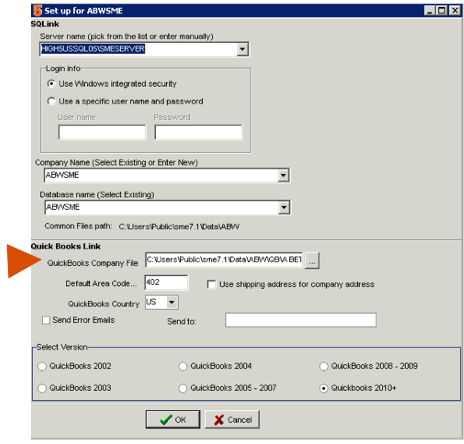SQLink Client Setup
Use this for setting up SQLink on a client
High5 recommends that all users of QuickBooks running SQLink be mapped to the same drive letter. Typically this would be mapped as 'Q' for QuickBooks.
1. Go to your SME shortcut. (Provided the user is already using SME. If not setup SME first.)
2. Right click on the SME shortcut > Properties> Find Target. In other versions select 'Open File Location'.
3. Locate the SQLink Documentation folder or the QBFC folder in the root SME5 directory. Early installations named the folder QBFC, later named it SQLink Documentation.
4. Open the folder and run the QBFC11_Installer.exe. (If it's already been installed it will ask to Modify/Repair/Remove - select Modify.)
Note: The QBFC program must be installed under the user's usual Windows login profile. Not under an Admin login profile.
5. Then create a shortcut to the sqlink5.exe and place it on the client desktop.
Important: SQLink and QuickBooks must reference the same path to access the QuickBooks company file.
7. In QuickBooks, press F2 and check the path if it matches SQLink, (refer to the SQLink path instructions below.) When you press F2 in QB, it opens the Product Information Screen. About a third of the way down on the left hand side is a field called File Information. This path should match for all workstations running SQLink. If it doesn't, go to File > Open or Restore and Open QuickBooks using the same path as the computer currently running SQLink.
8. Launch SQLink and go to File> Link Setup
9. Look at the QuickBooks Company File field in the QuickBooks Link section. The paths must be the same.

If the paths are the same:
* click cancel in SQLink.
* Click Ok in QB.
If the paths are NOT the same:
* You must either log out of QB and use the SQLink path 'or' set the QB path to match the path currently used to log into QB on the client.
* Suggested method is to use a UNC path for both the server & the client or if all clients log in via a mapped drive then map the server with the same drive.